Ericulture - raising Eri Silkworms
Samia ricini
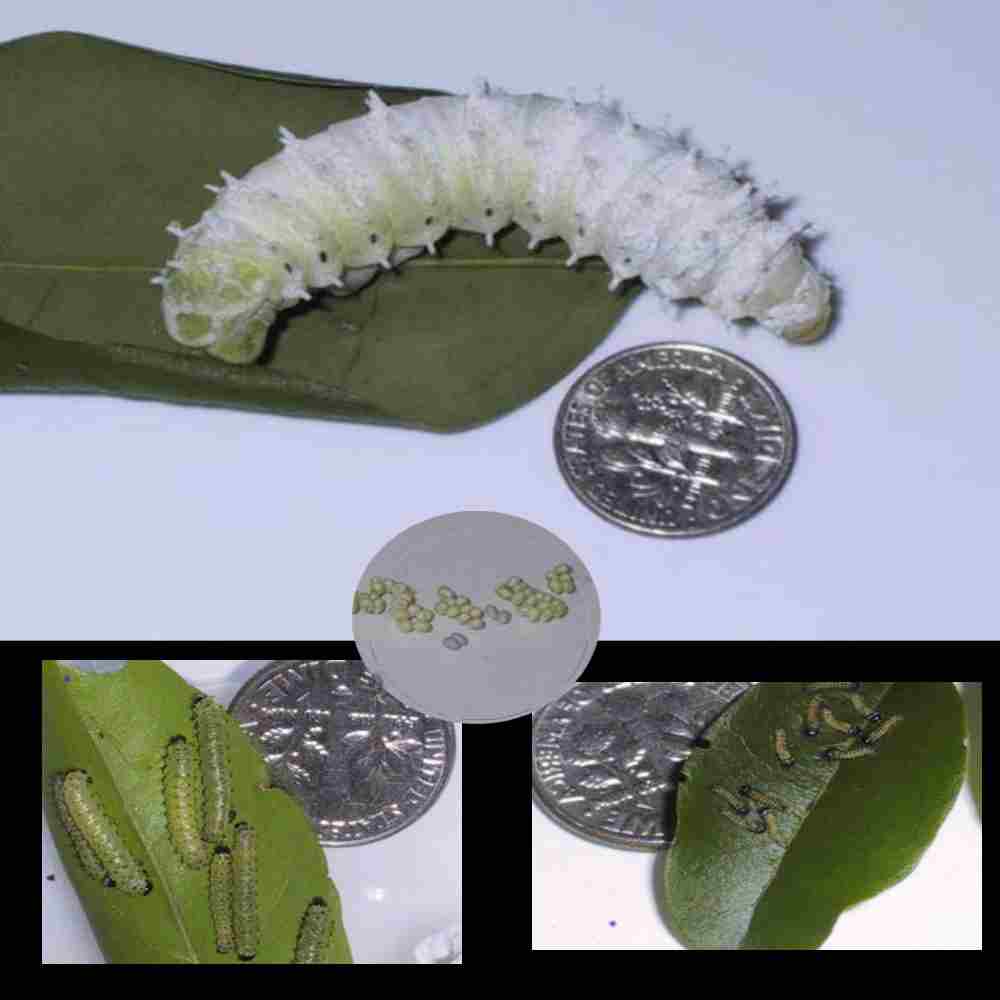 |
Samia ricini, or the Eri silkworm, is raised in India and parts of the Orient for its silk. Raising Eri silkworms is referred to as Ericulture. The silk is not reelable like Bombyx mori, the mulberry silkworm, so it is spun into a yarn which is both soft and durable. In their native lands, they are hand-fed mostly castor bean and tapioca leaves, but will also eat ailanthus and ligustrum. Eri silkworms are continuously brooded, meaning that they do not go into diapause, and their life cycle is continuous without regard to seasons.
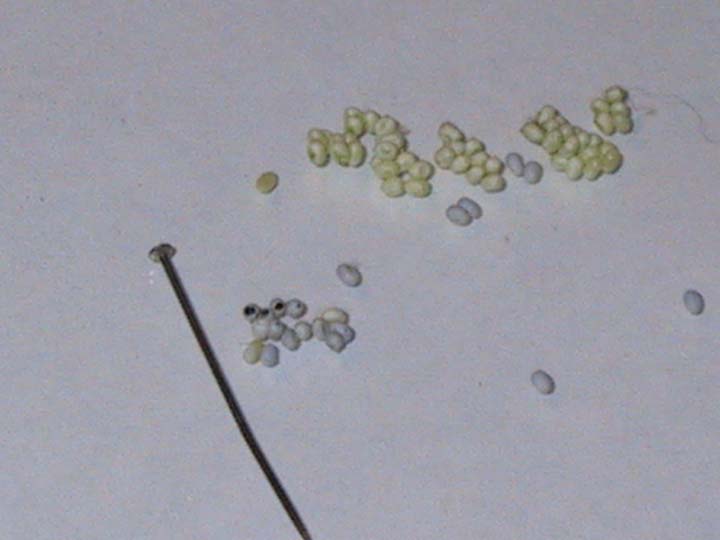
These are the Eri silkworm eggs. The ones that are dark are about to hatch; in a couple of them, you can see little black spots, which are the heads of the emerging silkworms. The hatching is a long process. They chew their way through, and it can take several hours. The pin in the photo is to show the scale; it's a standard steel sewing pin.
This is a single larva, close up. They are covered in tiny hairs. They are much more mobile than baby Bombyx silkworms; they will wander all over, off the leaves and on, whereas the Bombyx worms won't voluntarily walk off the leaf. February 23, 2004.
This is a bunch of the tiny larvae, with a dime for scale. These are all less than a day old. They are very unlike the mulberry worms, in that they need to feed in a group - if they wander off alone, they tend to stop eating and die. These are being reared on ligustrum. The species of ligustrum changes partway through, from Ligustrum vulgare to Ligustrum ovalifolium, because the leaves were staying moist better. Feb 23, 2004.
These are still in their first skin, but are going to start changing soon. The difference a day makes is surprising; you can see a couple of worms that hatched out a day or two later, and they're significantly smaller. They will be a couple of days behind all the way through their life cycle. February 28, 2004.
Here, you can see two first-instar worms, and two newly-emerged second instar worms. Just above and below the midline rib of the leaf, you can see two cast-off skins; they have little hairs sticking out of them. The newly-ecdysed worms have pale faces that are much larger than their first-instar sibs, and you can see the old cast-off heads as well, shiny round black shapes. The tiny dots are caterpillar poop, called "frass." March 1, 2004.
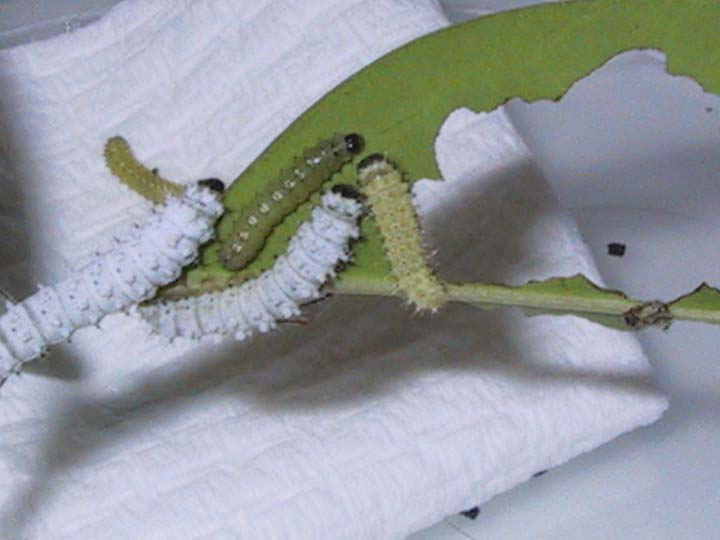
With the change to the third instar, they begin to look very different. The worm on the right has just shifted its skin; in a day, it will look like the other two on the left, plump and white with spikey knobs all over. The worm at the center top hasn't changed his skin yet, but you can tell it will happen soon, because it is tight and shiny. March 7, 2004.
This caterpillar has just shed into its fourth instar. The translucence lasts for about half an hour to an hour after each ecdysis; it's neat, because you can see its heart pumping through its skin. The white thing on its tail is the old third instar skin. March 9, 2004.
This is an older fourth-instar worm. They are very imposing looking with all those spiky knobs, but they're really quite soft. March 11, 2004.
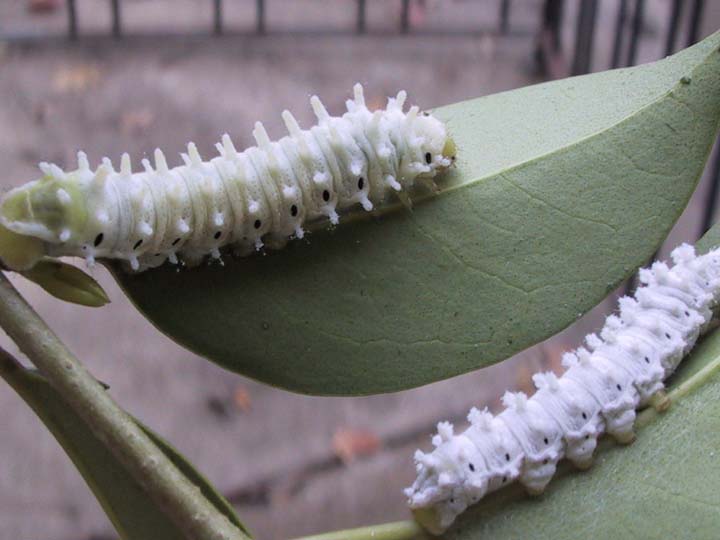
Here, you can see a newly ecdysed fifth-instar worm (top) and a fourth-instar worm (bottom). The spikes on the fifth instar are more pronounced, and the spiracles (the black spots, which mark its breathing holes) are larger. The difference in color will disappear once it has aged in its new skin for a while. Third, fourth, and fifth instar caterpillars are all covered with a fine white powder. It makes my fingers tacky when I touch them. I don't know if it's some sort of chemical protection to make them taste unappetizing, because I just can't bring myself to taste it. March 14, 2004.
Now for a little caterpillar anatomy! Most caterpillars have three thoracic segments, which bear the true legs, and usually ten abdominal segments. Each segment has a black breathing spiracle; this one has twisted a little sideways, so that you can't see the second one. Right below the first section are the true legs; these will become the legs of the moth. Further back, on some of the abdominal segments, are the prolegs, which have strong gripping ends to help the caterpillar stay on the leaves.
At the back are the anal claspers, which have a surprisingly powerful grip. I've read, although I haven't tested it myself, that if you try to pick up a worm without first getting it to let go of a branch, its grip is so strong it will rip in half before letting go.
On March 20, just a couple of days past four weeks, the first caterpillars began to spin. They cast fibers around, attaching them to a leaf, the side of their enclosure, or any other available surface, and slowly work their way into a cocoon from the outside in. Once inside, the worm will continue spinning, and then it will change its final skin and become a pupa.
This one is quite a bit further along in its spinning.

These are the first two cocoons. They took most of a whole day to finish, and I imagine they're continuing on the inside. These will be removed to a terrarium where they'll await hatching. March 22, 2004.
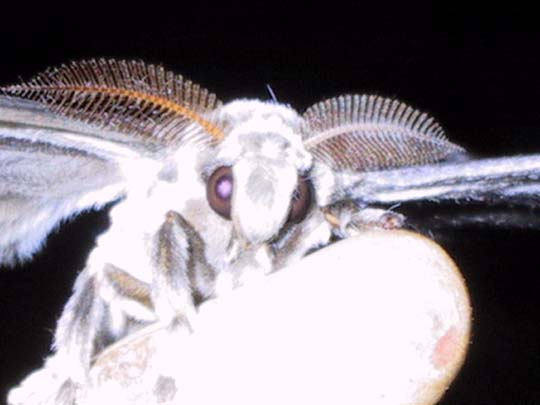
April 7, 2004: After sixteen days in the cocoon, it's hatching time! This moth was waiting on me when I got home from work this evening. You can see from the bushy antennae that it's a male.
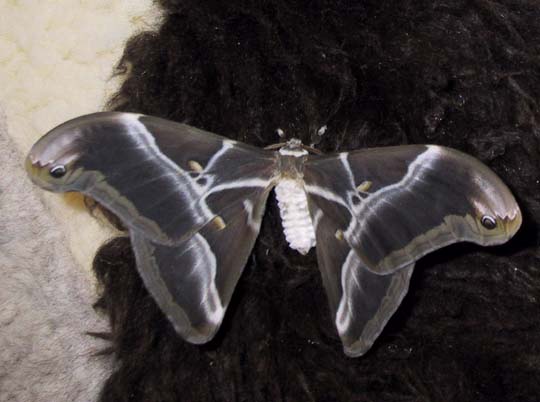
This is the moth on an alpaca rug; the dark background gives the camera more image complexity to work with and prevents it from washing out the white body. The body is covered with a thick fur, and has a texture like velvet.
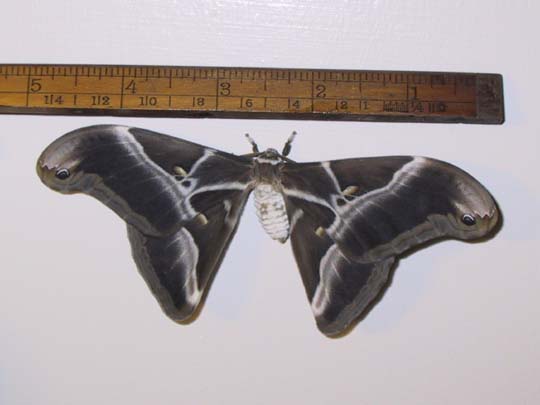
This moth has a wingspan of five inches.
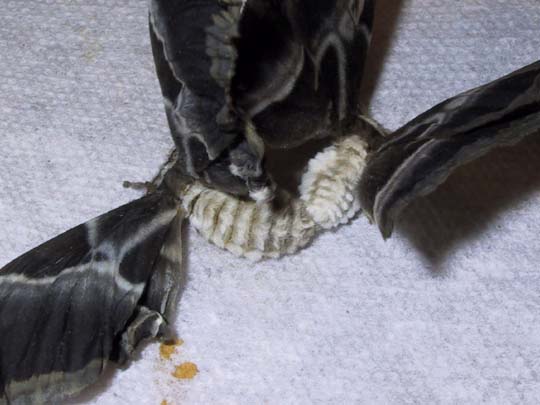
April 14. Yaaay! After FOUR MALES were hatched one after another, finally a female hatched, and there was some Moth Lovin'. The female and the male of this species look very similar; the antennae of the male are a little more bushy, but not a lot; the female has a slightly larger body, but not by much. These moths hook up in the evening, and remain attached throughout the day. They should separate this evening, at which time the female will start laying eggs.